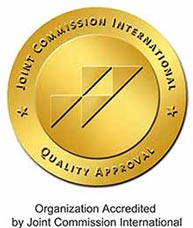
Knee Arthroplasty (Knee Replacement - TKR)

Knee arthroplasty or knee replacement procedures are widely used around the world as an effective treatment to restore mobility and function of the knee. This type of surgery replaces the diseased or injured knee joint with an artificial prosthesis.
When there have been degenerative changes or severe injuries to cartilage or other tissues in the knee joint, a knee arthroplasty may be the only way to fully recover mobility in the knee. First performed in the 1970s, a knee arthroplasty has become a routine surgery that is performed globally.
Because of the immense experience and research conducted by modern medicine, knee arthroplasty surgeries have an extremely high rate of success and do not pose a great risk to the patient, despite being moderately complex.
Why It’s Performed
The highly complex knee joint is a crucial part of your musculoskeletal system. Covered by the patella, the knee joint connects the femur and tibia bones of the upper and lower leg. When you run, walk or move in any other vertical way, the knee joint routinely withstands extreme pressure.
Certain types of osteoarthrosis or osteoarthritis of the knee joint require an arthroplasty procedure. Osteoarthritis refers to a number of degenerative diseases that start in the inner cartilage before transforming all of the muscles and ligaments of the whole joint, as well as the bones adjacent to it. This disease is prevalent in patients between the ages of 45 and 50, as 10-14% of this age group have been diagnosed with a form of osteoarthritis.
In two-thirds of all osteoarthritis cases, the patient inevitably sustains a severe joint injury. The primary signs are joint discomfort and visual changes to the knee, which your doctor can monitor with imaging technology. The patient experiences mobility loss, weakness and joint pain. During the initial stage of osteoarthritis, pain is typically experienced only after heavy loads and won’t last very long. During the more advanced phases, however, even the slightest load can lead to knee joint pain. This discomfort can remain even when the knee is resting, which leads to pain through the night and at the start of the day.
Arthritis falls into another type of joint disorder group that is inflammatory and hereditary in nature. These diseases often appear in people over 50 years old as traumatic arthritis or rheumatoid arthritis. When this joint disease impacts the knee, it is usually because of a viral infection, trauma to the area, ankylosing spondylitis or another disease. In the case of impaired joint function, the patient experiences extreme discomfort and pain, making it very difficult to keep up with the routine activities of life.
When first-line treatments provide no relief of symptoms and there are no contradictions, arthroplasty surgery is strongly considered and often performed. Whether or not to perform the procedure depends on many variables, such as severity of pain and loss of mobility, and the patient must be examined by an orthopedic specialist for an overall health assessment. Knee replacement surgeries have high rates of success for young and old patients alike.
Before undergoing a knee arthroplasty, your doctor will conduct diagnostic testing, such as X-rays or MRIs, to determine the severity of your joint issues and choose the right prosthesis for your condition. Your doctor will also thoroughly examine your overall health using a urinalysis, blood test and more to rule out the possibility of any chronic illness that could contraindicate surgery.
How It’s Performed
A knee arthroplasty surgery typically takes about two to three hours to complete. The surgeons first expose the joint capsule before removing tissue around the joint and a portion of the patella’s rear surface. It is critical that the ligamentous surfaces in the joint remain intact during the operation. The surgeon then cleans the surface of the bone next to the joint being operated on and installs an artificial strip that fits in with the other articular surfaces. During the final portion of the surgery, a small drainage tube is inserted to remove blood and fluids from the area.
There are three different kinds of artificial prostheses used during a knee arthroplasty:
- Cement fixation prosthesis
- Cement-free fixation prosthesis
- Combination of cement fixation and cement-free fixation prostheses
Cement-free prostheses are typically used in younger patients, while cement or combined prostheses are used in older patients. Because of the interchangeability and flexibility of the high-quality prosthetic components made of ceramics, metals, and plastics, surgeons are able to combine prosthetic devices during treatment. With so much competition in the market these days, your medical team will be able to determine the best artificial prosthesis for your particular situation.
Like all surgeries, there is a risk for complications and side effects when undergoing a knee arthroplasty. They arise for one of two reasons: the quality of the procedure performed or an exacerbation of the underlying disorder. Fortunately, these potential complications can be avoided by thoroughly examining the patient before surgery and providing the patient with anti-inflammatory and prophylactic anticoagulant therapy immediately after the procedure, as well as the patient carefully adhering to the guidelines set forth by the medical team.
Expected Results
As soon as the patient is discharged after surgery, the patient must begin a special rehabilitation program designed for arthroplasty under the direction of the medical team. In general, the initial 24 hours following a knee arthroplasty require that the patient remains in bed, maintaining as comfortable a position as possible. The day after the procedure, the patient is free to sit up and should start doing some basic, static leg exercises and breathing exercises. After three days, the patient may stand up, but the doctor will warn to do so with caution. The patient must return to see the doctor in about 10 days to remove the sutures.
It is recommended that all patients who have undergone arthroplasty greatly reduce the load on the knee for the first few months after the procedure. During this period, the patient should use a support, such as a cane, when moving is required. By the third or fourth month, the patient will typically return to their normal lifestyle. Following a knee arthroplasty, however, patients often must stop playing contact sports, taking long walks and lifting weights.
Adhering to these guidelines are vital to the life of the patient as well as the life of the artificial prosthesis. Despite the durability of modern prostheses, they still wear from normal use and last between 9 to 12 years for about 90% of patients. Loading the joint with too much weight may cause the prosthesis to fail earlier than expected, which becomes problematic for the patient and requires another knee replacement.
When the load of the knee is increased, the polymer linings and cement materials start to deteriorate, causing the prosthesis to loosen. Should this happen, a second knee arthroplasty, called auditing, will be performed. As a result, to promote longevity of your artificial prosthesis, make sure that you carefully choose a high quality, experienced surgeon to perform the procedure, select the right prosthesis for you and follow the recovery recommendations provided by your medical team.
Leading department specialists

TKR -price comparison Israel/US
| Procedure | US Hospitals | Rambam hospital | Average Savings |
| Knee Replacement | $38,000 - $40,000 | $17,000 - $19,000 | 45% - 56% |
TKR surgery package at Rambam 2018
| Knee Replacement (TKR) | Price $ |
|
The Package Includes: * Up to 7 days of hospitalization. * Surgery operating room charges: recovery room, scrub & circulating nurse. * Routine laboratory tests necessary for the procedure as ordered by the attending physician. * Radiology Studies: Chest X-ray, if required. * Medications: Routine medication used for procedure, during admission only. * Equipment costs: Medical Supplies, Routine Surgery Supplies. * Doctor Fees: Orthopedist + Anesthesiologist + Assistant orthopedist (if necessary) |
17,100 - 19,000 |








